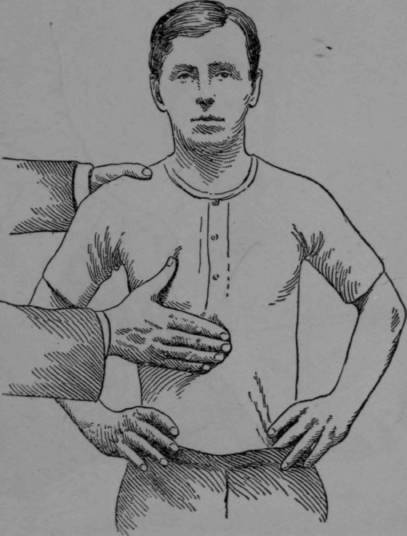A "Hold"
Having started partner dancing in ballroom, I was taught the most basic method of connection—The hold. There was the open hold, where you just held the hands of your partner (e.g. used in a swing). I was also taught the closed hold, where there are three points of contact. The left hand, the right arm, and the eyes (reverse for the woman). Depending on the dance, there was contact at the hips (e.g. Viennese Waltz), no big deal.
The hold was perfect for the ballroom world. Large square frame, big bold moves, precise, technical, and mechanical.
A "Hug"
Having left the ballroom world to transition to Argentine tango, I discovered that the ballroom hold didn't quite work for tango. Studying tango in open embrace (at the time) I had assumed that a ballroom frame and hold would be apropos. Seeing myself in a video caused me much consternation! What I had thought was right, actually looked quite goofy.
I needed to adapt and change my embrace to be more appropriate for the fluidity of tango. Relaxing my shoulders, dropping my elbows, and relaxing my spine, and lowering my chin caused my tango to look like... a tango.
I thought that I was in a good place with my tango. I knew my steps, patterns and could lead my partner with my arms. Holding my partner closer than being in a ballroom hold, I was leery of the closeness. I came up with a compromise. My hold was close enough to lead tango moves, and open enough to avoid the intimacy that tango supposedly created. I had shifted from a hold to a hug.
An "Embrace"
One day, I discovered the holy grail of tango—Close embrace (i.g. Milonguero) . It was the style that created that "Tango magic." It was tango at it's purest essence. It was elegant, simple to look at, yet so beautiful in it's lack of flash.
I did not realize how complicated this "Simplicity" could be. I had two things to deal with in dancing in close embrace.
- Technical
- The mechanics of learning how to execute tango in close embrace when you and your partner are totally connected and creating a common axis, while still being able to move fluidly in very confined spaces.
- Sociological
- This was a personal problem as I discovered that I had to dance with complete strangers. It was to close within my comfort zone. Dancing in close embrace was exactly that. Really, really close. I yelled within my mind... "These are not my wife's boobs!"
I got over the technical issues via a combination of learning, practice, feedback, and determination. I got over my sociological issues with dancing chest-to-chest with my partner when I realized that being in this predicament only became malicious if I made it so. I developed a deep respect for my partner, knowing that the dance really was done this way. The more I danced, the more comfortable and natural things became.
Overcoming these two issues played a lot into the my latest evolution of contact with my partner. I was now embracing her. It was no longer a cold mechanical hold. Nor was it a friendly hug. It is a comfortable, trusting, loving and caring embrace.
I hold not too tight, and not to light. I protect her and keep her safe. I lead her within my embrace. As we dance in an embrace, each tanda becomes a fun, kind, playful, passionate, beautiful, and magical tango experience.
.


















